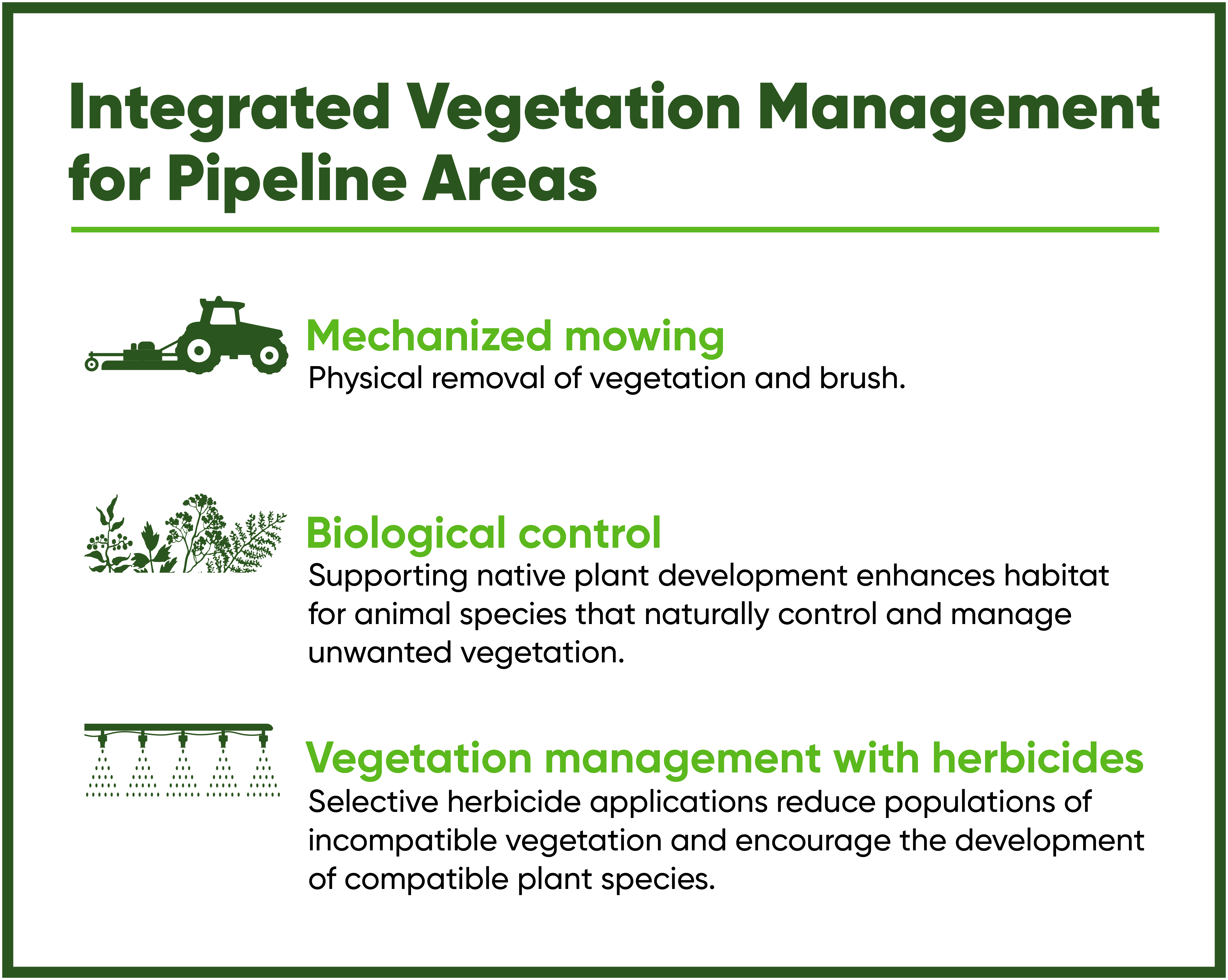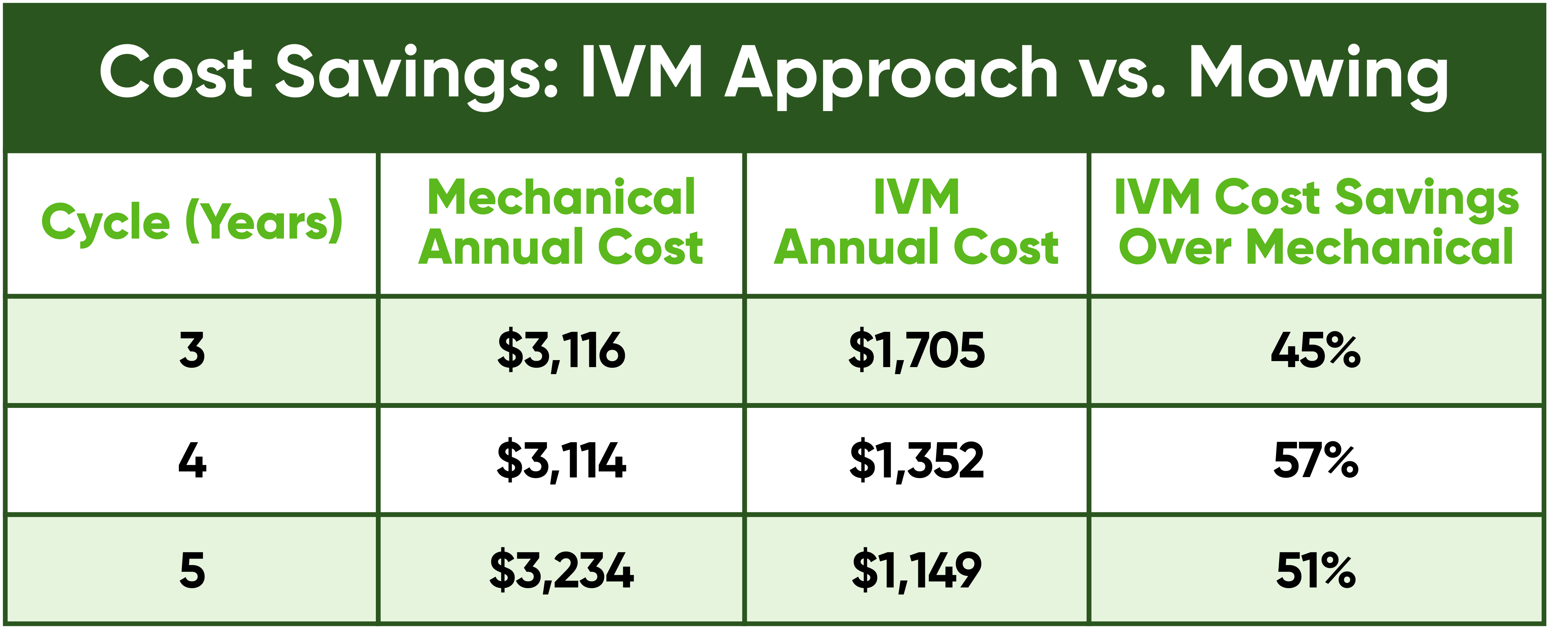Benefits of Integrated Vegetation Management for Oil and Gas Pipelines

In the highly regulated oil and gas pipeline industry, controlling vegetation is vital to compliance. Overgrown areas can pose challenges with inspections and repairs. Undesirable vegetation can even pose issues below ground, as roots can put pressure on pipes that may eventually lead to damage. With half a million miles of natural gas and liquid petroleum pipelines in the U.S., pipeline operators are responsible for managing vegetation on an enormous amount of land. With an integrated vegetation management (IVM) approach, operators can protect pipeline integrity, reduce costs and benefit the environment and communities.
IVM looks at vegetation control from a holistic perspective, accounting for not only controlling incompatible vegetation, but promoting a healthier ecosystem where native, compatible plant species can flourish. Over time, an IVM approach enhances wildlife habitats and helps to make areas more self-sustaining so that, in the future, less intervention is required to control invasive plants that can potentially interfere with pipelines.
IVM incorporates multiple methods of vegetation control. In an IVM approach, solutions may include physical removal of brush through mechanical mowing or brush removal; biological controls, such as promoting populations of wildlife that naturally feed on incompatible vegetation; and use of selective herbicides. Selective herbicides can be an important tool in IVM because they are designed to control targeted species of plants — often invasive species — without harming compatible, native vegetation. With selective herbicides, vegetation control often lasts longer than what’s possible with mechanized mowing alone, without making the treated area a barren landscape, which may be quickly filled in with even larger populations of undesirable vegetation.

An effective IVM approach helps keep operators in compliance with regulations while also reducing downtime. When vegetation is well controlled, access is easier for inspections and repairs. Proper vegetation management also helps ensure that line markers remain visible, which is vital for public safety. Since an IVM approach works to actively encourage growth of native, compatible vegetation, it also helps curb growth of unwanted species, including deeply rooted trees that can interfere with pipelines. This reduces the need for more substantial physical removal processes that could require digging near pipeline areas. In certain regions, incompatible vegetation also contributes to wildfire risks and intensity. In western areas, invasive cheatgrass serves as wildfire fuel. While wildfires might not directly threaten underground pipeline infrastructure, they may require line shut-downs and above-ground repairs that can disrupt service.
Use of selective herbicides can reduce the need for mowing and is substantially less expensive than mechanical mowing over time. One analysis shows that by year 3, the annual cost of IVM is 45% lower than the cost of mechanical mowing.1 That’s because as areas begin to fill in with compatible plant species, there is a reduced need for maintenance overall. While mowing may provide visible short-term benefits, it can also spread seeds from unwanted plants. Mowing simply can’t keep up with the pace at which unwanted plants will reinvade the area.

Incorporating IVM practices can result in substantial cost savings versus mowing alone.1
An IVM approach helps restore landscapes and makes them more resilient over time. Using selective herbicides with selective application techniques such as low volume foliar or basal bark spraying as part of that approach helps minimize impact on the environment. Native, compatible vegetation has room to grow, creating more habitat for wildlife and pollinators. Studies of right-of-way areas managed using IVM reveal they’ve become home to deer, birds, amphibians, reptiles and plentiful and diverse butterfly populations.
These environmental benefits are one more way pipeline operators can demonstrate their commitment to protecting local ecosystems above and below ground. The benefits of an IVM approach are appealing to communities and landowners, as rights of way can be viewed not just as necessities, but vibrant parts of the native landscape.
An IVM approach can help pipeline operators gain confident control over vegetation, knowing that the areas over their lines are accessible, in compliance and playing a positive role in the environment. Pipeline operations are complex. With less to worry about above ground, operators can make sure vital services keep flowing below ground.
1 Goodfellow, John. “The Cost-Efficiency of IVM.” Utility Arborist Association. December 2022. https://www.gotouaa.org/wp-content/uploads/2022/12/Final-Report-Cost-efficiency-of-IVM.pdf.
Sharing innovative research, success stories and tips with invasive plant managers.